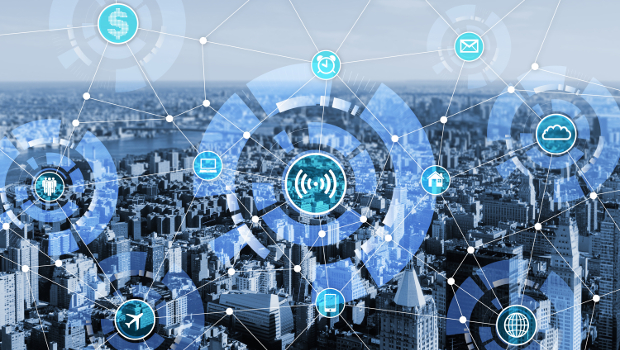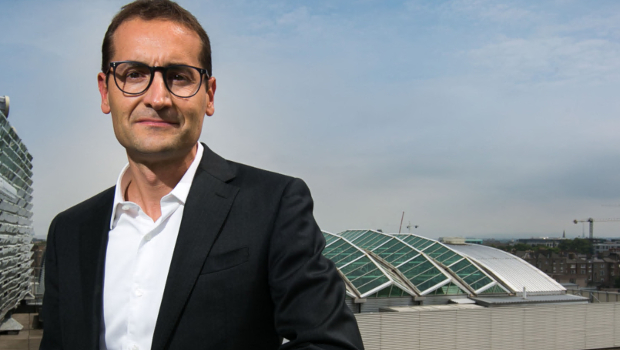
The business case for 5G
The pitch for 5G is straightforward enough: mobile broadband running 10 to 100 times faster than today’s 4G LTE networks, but welcome as this blast of data will be, is there more to it than downloading ultra-high definition films in a few seconds?
On the consumer side, of course, there will the continued move of the internet from the desktop and laptop to truly mobile, arguably giving the cable internet and fixed-line telecos that provide fibre optic connections something to sweat about.
But, in the end, faster broadband is just more of the same. Where things are expected to change more dramatically is with arguably less glamorous uses. 5G has the potential to change enterprise network computing, not only because of its high speed and bandwidth, but also though support for massive amounts of devices being connected, and all of this done with low latency: 20 millisecond lags could be reduced to one millisecond. Combined with pervasive networks – in urban centres and rural areas – a wide range of new business cases start to make themselves apparent, just as they did with 4G LTE and low-power wide-area network deployments.

Of course, there’s always the problem of the chicken and the egg: who will use the technology if the network isn’t there, and who will deploy the network if the devices don’t yet exist?
Docking with the new network
Vodafone already has a 5G network up and running in Ireland, albeit on a limited scale and operating as a testbed. Located in the Dublin Docklands, this working 5G network was launched in late November 2018 with Vodafone Ireland chief executive Anne O’Leary making what the company called the “first ever live holographic call” to her colleague Max Gasparroni, Vodafone Ireland’s interim chief technology officer.
In March of this year the company announced plans to double the size of of its 5G footprint in the area.
Gasparroni, said that the expansion reflects the success of the 5G standard and a desire to see what can be done with it.
“We expanded the testbed in the Docklands for companies to come forward [with new ideas],” he said.
This is important, he says, because although there are clear uses no-one can be quite sure how 5G will be used until commercial applications are developed.

“It’s pre-commercial as the devices are not [yet] available [but] we expect the commercial rollout with devices at the end of this year,” he said.
Indeed, Samsung expects to deliver 5G phones this year, and in line with this expectation, Vodafone will launch a full, commercial network the fourth quarter of this year.
Gasparroni told TechPro that the benefits of 5G are clear from a technical point of view, but it remains to be seen how business will make used of the technology.
“We see 5G as having several main features: ultra high speed, the ability to connect a massive amount of devices – similar to narrowband IoT on 4G but taken to another scale, up to millions of devices per square kilometre – and reliability.”
Adoption is likely to begin on the consumer side, where the use cases are the simplest: better and faster mobile internet. Indeed, this is the path already trod with 3G and 4G, but the expansion in bandwidth and speed means new ways of using online services are likely to come to the fore.
“It will offer an enhanced mobile broadband experience: augmented reality and so on,” said Gasparroni.
“Probably growth will come first from the consumer side, followed by the enterprise,” he said.
In order for business applications to flourish the hardware needs to be out there, and, Gasparroni says, the consumer side will drive down the cost of the chipsets that will make niche applications economically feasible.

“Of course, it all depends on how the industry works. At the end of the day it’s a scale game: you need to develop the chipsets, and the first we’ll likely see is the smartphone with others like utility meters and sensors following.”
Brenden Rawle, director of interconnection for Europe, Middle East and Africa at interconnection and data centre business Equinix, agrees that the initial push will come from the consumer market.
“What are these guys good at doing? They’re good at selling mobile phones. But how it will change the enterprise is a big question, and a lot of people are thinking about that,” he said.
Thinking and spending money, in fact.
“Theres’s going to be a lot of heavy investment in the next two years. The obvious first use case is enhanced mobile broadband,” he said.
IoT driver
When it comes to the enterprise, however, the Internet of Things (IoT) is predicted to be the major driver, with widespread broadband connectivity moving the IoT from sending small packets of data to continuous connectivity and large data transfers.
This should produce a step change in how IoT applications work, said Voadfone’s Gasparroni.
“The second one is connecting massive IoT. This is an ecosystem that has [still] to be developed. You will have smart cities: smart parking, asset tracking, object rendition for policing and crowd management, asset tracking. It could be a council, or a police force, blue light and amber light services, [or] a courier company.”
Equinix’s Rawle says that once the devices are out there the applications will begin to demonstrate their utility.
“Smart cities are something we will see, though the arrival of [fully] self-driving cars is, frankly, a long way into the future.
“Manufacturing will certainly be interesting: you’ll see ring-fenced networks on oil rigs and in factories. Look at a very large factory, a massive car plant, say what you would want there is almost the opposite of network slicing: what you want is connectivity across the whole plant.
“The other [area] is healthcare: things like remote patient monitoring and getting into remote diagnostics and even surgery,” said Rawle.
The volume of data, as well as how and even where it is processed, is an issue that Rawle and others are considering.
“The interesting use case that demonstrates that is the smart vehicle. The question is what happens to that data? Does it stay in the car, does it need to stay local, or does is go somewhere for processing?”
This will become a massive question when the volume of data being generated runs up against the need to process it as quickly as possible, something that is obviously essential when it comes to applications such as autonomous vehicles.
“Companies like Cisco and Intel have done research into this The Intel number is that a car will generate four terabytes of data in a day,” he said.
Data needs
Equinix is not in the business of building out radio networks, but it is on the sharp end of data transfer, storage and processing.
“For us [at Equinix] the benefit of the 5G evolution will be the increase in data, a lot of new players coming into the market who will need to connect to the mobile providers, need to host data [and] need a gateway to major cloud providers.”
Rawle says that the volume of data produced will not be a problem for the wider network, but the question of where processing is done is yet to be answered.
“The interconnection is fine. The more interesting question is: when these new use cases come out in the next three to five years, does the compute need to get closer to the data?
“Edge [networking] and the concept of micro data centres. Where does the interconnection need to happen? We think most of it will still happen at the big centres, but there is definitely a case for investigation,” he said.
Setting the standard
Manufacturers including Ericsson, Qualcomm, Intel and Huawei have been working to develop the chipsets that will work their way into 5G network equipment and end-user devices, but while the overall outline of the 5G standard is clear, there remains to be done some finalisation.
Spokespersons for Ericsson and Huawei were unable to respond to TechPro’s queries at the time of going to press, however in June 2018 the 3GPP, the industry group steering the 5G standard, announced that the standard itself was finalised. This announcement was in reference to the new ‘Standalone’ 5G standard; the Non-Standalone (NSA) standard that is deployed on top of 4G LTE networks was standardised in December 2017.
The next step, then, is getting the networks up and running – and getting the devices out there to make use of it.
Paul Phelan, chief technology officer for Data Edge, says that while the concept of the 5G network is familiar enough, in order to deliver the goal, work needs to be done.
“There are areas that are not yet [fully] ratified [but] the new radio technology is very real. And there are packet systems that are completely new and are replacing LTE. That’s not fully ratified yet, though,” he said.
“This evolution, this particular revision, is universal. It will bring everything along. Whether it’s Netflix or the phone, or a dishwasher or industrial IoT it’s all packets: the same infrastructure will work for everything.”
5G will, for reasons of radio physics, require significantly more cells than do current 4G LTE networks.
“With small cell they’re needing to reach above the traditional radio spectrum,” he said.
“We need new spectrum as it’s so congested, but the nature of the beast as you go up above 2GHz is that the reach of that bandwidth is very poor.”
Despite this, the small cells themselves are not as difficult to install as traditional cellular radio masts.
“The backhaul isn’t the problem. The splaying out from the cellular Node Bs to the smaller cell sites is the issue, but that’s an issue of planning. Are they just something that’s bolted onto a lamppost? They’re certainly not like the traditional cell Bs.”
Design considerations
Data Edge is working with the major mobile networks in Ireland to design their networks and, says Phelan, deploying 5G means having different considerations in the design process.
Data Edge is working with the major mobile networks in Ireland to design their networks and, says Phelan, deploying 5G means having different considerations in the design process.
“They have to be much more conscious,” he said.
“Latency is a massive issue and you need to work hard on the timing of the backhaul, the cellular node Bs and individual smaller cells. They need to be timed within 1.5 microseconds of each other [and] this has required a lot of new developments in packet timing,” he said.
What’s next? In late March 2019, 250 researchers gathered together in Levi, Finland to discuss the designing of 6G networks.
Venture Beat reported Dr Ari Pouttu, professor at Finland’s University of Oulu and vice-director of the country’s 6G Flagship programme said that he didn’t know what 6G was.
“Nobody does,” he said.
Sounds familiar.
In the meantime, Vodaone’s Gasparroni says that, ultimately, we don’t know quite what is coming in terms of enterprise 5G, but we will recognise it when it arrives.
“You wont see all of it from day one as the architectures and standards will be developed over time, just as we saw with 4G,” he said.
The travails of Huawei
There is money to be made in 5G, not only in selling consumer-facing devices and services but particularly in the network equipment itself. There is also the question of geopolitics, however.
Chinese manufacturer Huawei hit the headlines over the arrest of the founder’s daughter and chief financial officer Meng Wanzhou in Canada, who is currently fighting extradition to the United States, but it has also been at the centre of a storm of criticism for its links to the Chinese state.
Huawei denies the allegation that the Chinese government has a ‘backdoor’ into its technology.
Chief executive and founder Ren Zhengfei told CBS News that: “It is not possible […] because across our entire organisation, we’ve stressed once and again that we will never do that. If we did have that, with America’s advanced technology, they would [have] found that already. So that proves we do not have it.”
There has been some speculation that the dispute is rooted more in a growing trade war, or at least trade war of words, between the US and China. US president Donald Trump tweeted that he wanted American companies to lead the world in “smarter” 5G and 6G technologies.
The moves go beyond rhetoric, however. US secretary of state Mike Pompeo even pledged to withhold intelligence from counties that use Chinese telecom equipment.
US attempts to stymie Huawei appear to have stalled. Britain, Germany, India and the United Arab Emirates have all signalled that they do not intend to ban Huawei from their national networks. Britain’s National Cyber Security Centre, part of signals intelligence agency GCHQ, said that any potential risk from Huawei’s presence in the country’s 5G backbone can be mitigated. Nonetheless, some other countries are taking a stronger line: Australia banned Huawei equipment from its 5G infrastructure in 2018, a move quickly followed by New Zealand.






Subscribers 0
Fans 0
Followers 0
Followers